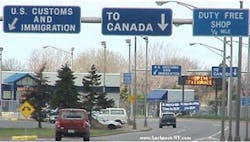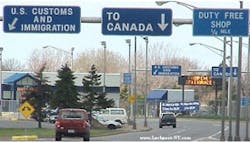The drug importation movement is once again gaining strength in the new Congress. Importation will end up being a punitive tax on innovative pharmaceutical manufacturers. Meanwhile, consumers will bear nearly all of the risk created by legalized diversion, yet receive little of the benefit.
Europe provides an illuminating cautionary tale. Combining the European Unions market integration principles with national price controls has created an enormous cross-border gray market, often called parallel trading. Wholesalers in countries such as Spain and Greece sell to importers in higher priced countries such as Germany and the U.K. Drugs may pass through dozens of hands before reaching their destination.
Surprisingly, the average European consumer receives almost no price break from parallel trade, especially in countries with flat-rate patient co-payments such as the U.K. and Germany. Instead, wholesalers, importers and exporters are the big winners from importation because they absorb 80% or more of the price differences between countries.
Retail pharmacies also win from parallel trade. For example, U.K. pharmacies profit from parallel imports because reimbursement is the same regardless of the source of the drug. Thus, a pharmacy can keep the difference between the import price and what they pay to a wholesaler.
Manufacturers are the biggest financial losers. Cross-border arbitrage leads to billions in lost revenue, limiting funds for future research and development. Manufacturers costs also go up because they cannot allocate production or distribution properly due to inaccurate market data. Pfizer, GlaxoSmithKline and AstraZeneca all have announced plans to overhaul drug distribution in the U.K., Europes top destination for parallel imports.
Consumers also lose because diversion provides a gateway for thieves. In Europe, products are often repackaged by intermediaries along this supply chain and may pass through dozens of hands before being resold. Legitimate products can easily get mingled with counterfeits, with no feasible way to introduce pedigrees across countries. Its no surprise that counterfeit cases are growing quickly in Europe, with last summers Lipitor incident in London being a prominent example.
Its really a shame that the public perception of pharmaceutical manufacturers is so low that no one believes in the supply-chain dangers of cross-border importation. As someone who studies drug distribution, I believe that politicians are abdicating their responsibilities and endangering public health by opening up diversion doorways for criminals.
Ironically, importation will save little, yet cost a lot.
About the Author
Adam J. Fein, Ph.D., is president of Pembroke Consulting, a research and strategic advisory firm focused on the pharmaceutical industry. His weekly Web log can be accessed at http://DrugChannels.blogspot.com.




